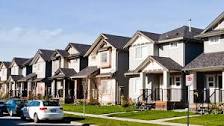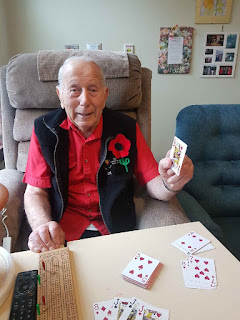Homeowner grant has been a political goodie for 60 years
Assessments on Surrey homes rose dramatically, due to a red-hot real estate market in the first part of 2016. Assessments are based on the actual value of homes as of July 1, 2016.
It is a rare occasion when the homeowners’ grant becomes a
hot political issue, but it was shaping up to do so in the run-up to the May 9 provincial
election - until today.
The reason is that many Metro Vancouver home owners,
including a substantial number in Delta, Surrey and Langley and an even higher percentage in high-demand areas like White
Rock, South Surrey, Tsawwassen and Fort Langley, could have lost their homeowner grants due to soaring assessments. In
many areas of the South Fraser region, assessments rose close to 40 per cent over
the 2016 figures. Some homeowners saw their assessments rise by much higher amounts. On Tuesday morning, the provincial government eased that possibility.
(In my own neighbourhood, assessments rose dramatically. Interestingly, on one side of the street, they rose at a much higher percentage than the other. The difference is that, on the one side of the street, Surrey recently passed a neighbourhood concept plan which means the land is now open to development - and thus worth much more than similar properties across the street. One property is valued at $3,487,000, as compared to $1,306,300 last year. That is a 266 per cent increase. A larger property directly across the street, and outside the NCP, is assessed at $2,790,600.)
Some background on the homeowners’ grant is helpful in understanding
its significant political potency. First introduced by longtime premier W.A.C.
Bennett in 1957 after he promised it in the 1956 election, the grant was touted
as a Social Credit dividend.
In fact, Bennett had little to no interest in Social Credit
economic theory, but realized that reducing property taxes for homeowners by
using a small portion of a provincial surplus to pay a portion of the taxes to
municipalities made for great politics. And it did (and still does).
The initial grant was $28, but in the 1950s, that was a significant
portion of the overall property tax burden. It was initially meant to pay the
taxes on $1,000 of the assessed value of the property, which at that time for
many homeowners would have been 10 per cent or more of their home’s value.
At that time, school taxes were often the biggest part of
homeowners’ tax bills, and the grant simply meant the province was paying a
higher percentage of education costs which were its constitutional responsibility.
The grant has continued since that time, frequently raised
as inflation has boosted the total tax bill and reduced the buying power of a
dollar. The NDP government considered cutting it off for homeowners it defined
as wealthy in the 1990s, but quickly reversed course after a storm of protest. For
almost all of the time up to the present, the vast majority of homeowners have
received the grant, currently $570. In 2016, 91 per cent of B.C. homeowners
received it.
Seniors, people with disabilities and veterans receive an
additional $275, and since 2010, an extra $200 has gone to homeowners outside
the Lower Mainland and Greater Victoria. This boost to the homeowner grant was
initially sold as being additional assistance for people living in hard-hit
resource-producing areas, but is now considered to be a return of some carbon
tax to those with fewer transportation options, as part of the BC Liberals’
“revenue-neutral” approach to taxing emissions.
This is ironic in some ways, considering that gas prices in
Metro Vancouver are the highest in the province and the country - thanks to
both the carbon tax and TransLink’s 17 cent per litre transit tax.
This extra $200 grant is particularly interesting in the
context of the 2017 assessments. The highest boosts in property values in B.C.
have almost all occurred in the three areas where homeowners do not get the
extra $200 – Metro Vancouver, the Fraser Valley and the Capital Regional
District.
So it was entirely possible that many more homeowners in those
areas would not receive any grant at all, while in areas of the province where
home prices have risen more modestly, almost every homeowner will get a $770
grant. The $570 grant will only go to the lucky homeowners in the Lower Mainland
and Victoria whose assessments are below the current $1.2 million property
value threshold.
The provincial government announcement on Tuesday boosted
the homeowner grant by $400,000, from $1.2 million to $1.6 million. It had been
$1.1 million in 2015. This being an election year, the pressure was on the
provincial government to boost it significantly.
With no change to the threshold, the homeowner grant would
have been an election issue – and it could have made the difference in the BC
Liberals winning or losing, given how many seats are at play in the Lower
Mainland, Fraser Valley and Victoria.
Bennett would be proud. A 60-year-old political goodie still
has the potential to play a significant role in shaping voter intentions.




Comments
Post a Comment